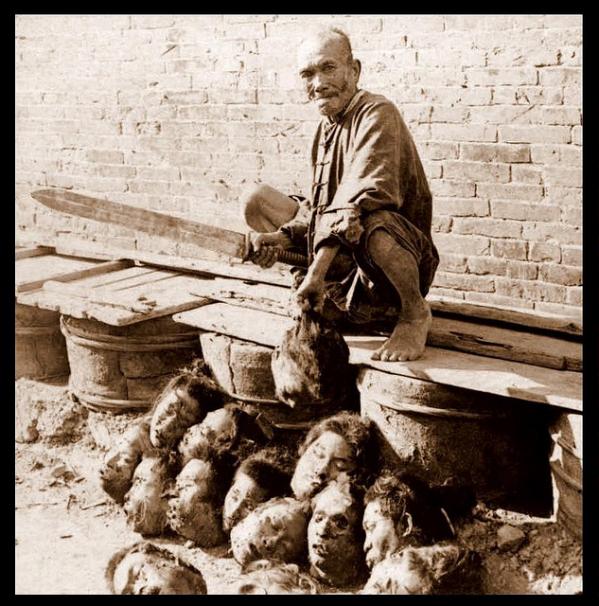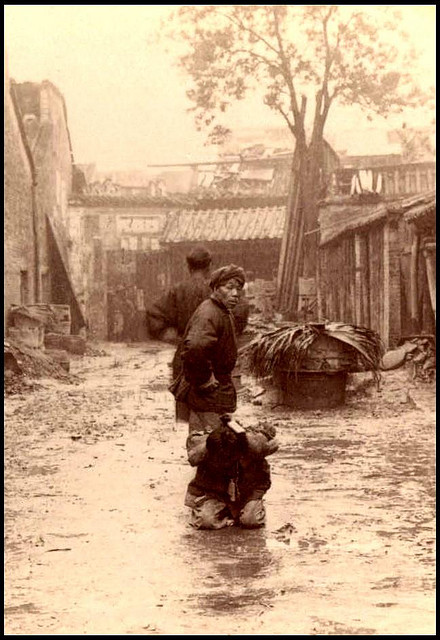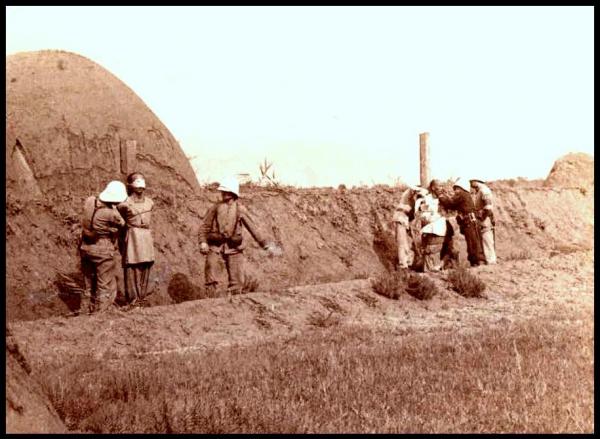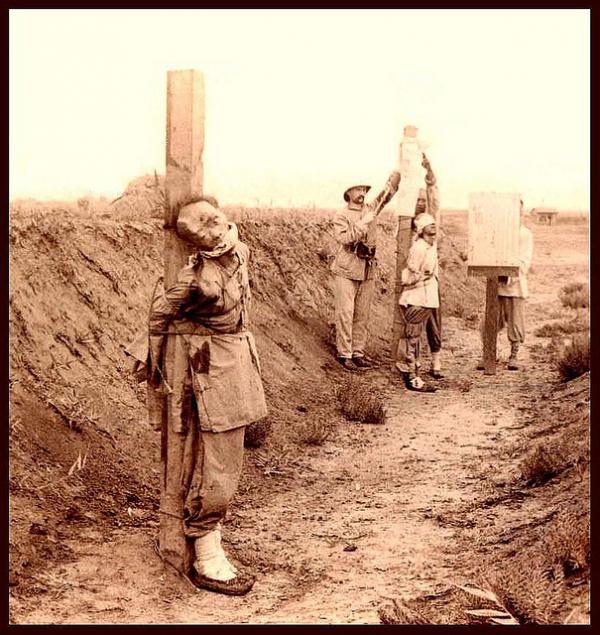Brutal Torture and Execution in Old China

Brutal Torture and Execution in 19th-Century China. Justice in China at the end of the 19th century could be swift and brutal. And as these images show, such punishments were a popular subject for overseas photographers.
Beheading, strangulation and starvation were all acceptable execution methods in 19th-century China. What’s more, even those not sentenced to death could endure days of suffering. Such ‘justice’ in old China was not a pretty sight – so be warned: these images are not for the faint-hearted.
These photographs were taken during and directly after the Boxer Rebellion, which was a particularly violent and turbulent time in Chinese history. All over the country, Boxer rebels and criminals were put to death in full public view. And their corpses, or at least parts of them, were displayed as a warning to others.
Whether the sentence was death or torture, there were often Western photographers like James Ricalton around, ready to capture the punishments on film for fascinated audiences back home. These are some of the graphic images Ricalton produced.
Here, a prisoner kneels in the mud, with his arms behind his back and his head bowed down to the ground. He awaits the deadly blow, which is now only seconds away. Above him stands the executioner, sword drawn back behind him, preparing to deliver the fatal swipe. Behind them, another man turns away.
Moments later, it’s done. It’s hard to say which is more shocking: the headless body and decapitated head or the casual, nonchalant look on the executioner’s face. Also, the photographer was not simply an observer. At this point, he’s actively involved in the scene and has eye-to-eye contact with the executioner.
The final picture in the sequence shows the executed corpse sprawled out on the wet ground, with the severed head lying inches away. Blood oozes from the neck and head, soaking into the already sodden soil. Photographer James Ricalton took many photographs of the rebellion, and a book of his images was published in 1990. According to editor Christopher J. Lucas, he was “widely acclaimed as one of the most important (certainly most popular) photographers of his time.”
A submissive prisoner awaits his fate in the rain.
A ‘cangue’ is a type of portable torture device that was often used for forms of corporal punishment in old China. Unlike the Western equivalent, known as the stocks, cangues could be carried around. This ensured that the victim’s humiliation was as public as it could be. The device consisted of two large, flat boards, which were fitted around the individual’s neck. Often, the prisoner couldn’t reach their own mouth and had to rely on others for food. And making sure their shame was complete, their name, address, and the nature of their crimes were written on a label and stuck to the boards.
As for the person in the box in the left of the photograph, we’ll explore the form of torture depicted a bit later. This photo by James Ricalton is the first in another gory execution sequence – this time by firing squad. It wasn’t just the Chinese who meted out gruesome punishment during this era.
Here, a Boxer chief prepares for his execution, this time carried out by the Chinese themselves. His feet are shackled and he is tied to the stake. Behind him, a few onlookers have already found a good vantage point from which to watch the spectacle. With the deed done, the executioner proudly holds his sword up, as the crowd gazes on.
We can also see that children, too, attended the executions. The small boy near the front of the crowd looks particularly young. And while one child covers their face, another youngster’s neck is craned as they try to get a better look. With the deed done, the executioner proudly holds his sword up, as the crowd gazes on. We can also see that children, too, attended the executions. The small boy near the front of the crowd looks particularly young. And while one child covers their face, another youngster’s neck is craned as they try to get a better look. Sometimes, a quick beheading was the easy way out. Here, a man is pictured standing in a box, as a crowd watches his progress.
His feet rest on pieces of wood or stone, which would have been removed one by one over the course of a few days. A piece of rope was wrapped around the victim’s neck, and finally, when they could no longer stand, either their neck would break or they’d slowly strangle to death. Fortunately for this particular prisoner, he had a friend who cared enough to pass him some poison so as to put him out of his misery before all this happened.This prisoner was photographed with his arms bound to a wooden stake, awaiting judgment outside a court. The man lying face-up in the background was already dead; he was tortured to death. We wonder how documenting such barbaric practices affected photographers like James Ricalton.
Surely it must have left an impact. This shot offers another view of the same scene. Three more prisoners can be seen tied to stakes in a similar fashion, and we can clearly see the dead prisoner lying on his back. Talk about a zero tolerance policy. In this final photograph, human heads and other body parts hang in baskets as a gruesome deterrent. It’s a fitting way to end our grisly look at tough justice in old China. What’s more, although this article concentrates on a period of time in China, throughout history, many other nations have dished out horrific forms of punishment. And the scariest part is that torture and beheadings are still carried out in some countries today.
Политика конфиденциальности | Правила пользования сайтом




















